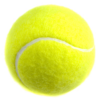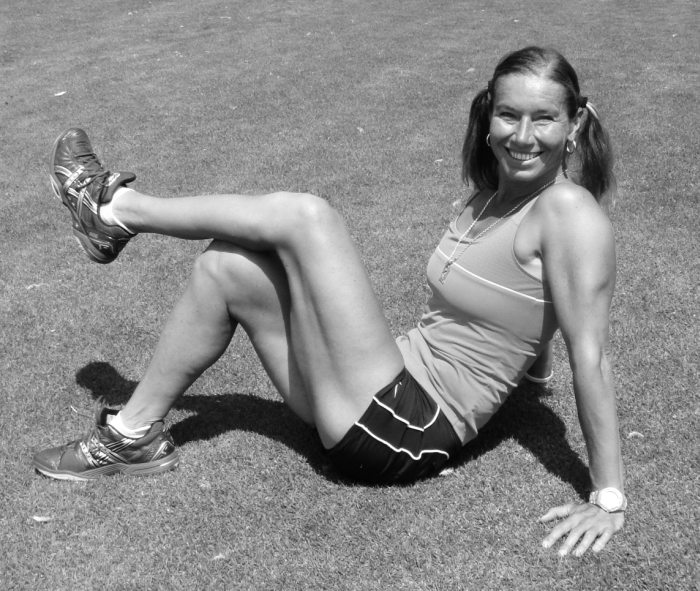•• 13 ••
Calf Myofascial Release
To play good tennis you need to be light on your feet, with the weight on your front foot most of the time. Your calves work very hard—constantly making the small steps to adjust the body to the oncoming ball, pushing off, stopping and changing directions. One of the major reasons behind calf injuries is poor conditioning; when they become inflexible and weak, they get easily overworked and overstretched. Tight calves develop trigger points (page 41) and then even stretching will not help. You may experience other painful symptoms, such as shin splints,plantar fasciitis or sore Achilles tendons.
To get rid of the trigger points you need to do calf myofascial release. You can either visit a deep tissue massage therapist, or perform self-myofascial release. The latter option is highly advisable because you should do the calf myofascial release daily,or at least after each tennis practice. You can do it either standing using the net pole, or seated using your knee.
Stand close to the net pole and put your calf on a top of it. Most of the net poles have a round top that is greatly suited for “digging” in your calves. If your net pole is sharp, find something more round. Start sliding your calf over the top of the pole from the ankle to the knee. If you find an extremely sore trigger point, stay on it longer and work it away with short concentrated movements. Turn your foot inward or outward to reach different spots in your calf. This work can be extremely uncomfortable and painful, but when your calves get soft and smooth without knots, you will feel great. If it is difficult to put your calf on the top of the pole, your hamstrings are too tight and they need stretching and myofascial release as well.
The seated calf myofascial release is doable anywhere and anytime. Sit on the ground, bend your right leg and put your left calf on the top of your right knee. Start sliding the calf over the knee, searching for the painful trigger points. Work the entire length of your calf from the Achilles tendon to the knee, and from all possible angles by angling your right foot outward or inward. Healthy calves will prevent future calf injuries such as strains, tears or complete ruptures. Nothing is more debilitating than being sidelined by problems with your calves. Keep them healthy and you will be able to train harder and play better tennis.

